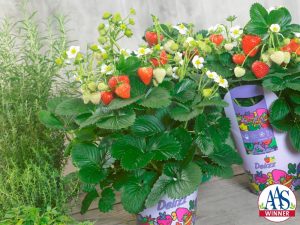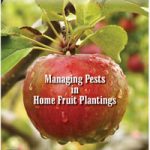Category: Fruits and Nuts
Question and Answer
Q. I had to harvest quite a few tomatoes that weren’t quite ripe yet to avoid the frost. What can I do with these now? A. Tomatoes will continue to ripen off the vine if they have reached the critical stage of development called mature green. If the tomatoes have not hit that stage yet, they will remain green once removed from the plant. Mature green tomatoes are about normal size and have a whitish-green […]
Q. For the last two years my Nandina has produced a lot of flowers that promised to berry, but the berries seem to drop off before fruition. It has berried beautifully in the past, and there has been no change in environment. A. Nandina is marginally hardy to southern Indiana, but it is considered to be an invasive, weedy species in the southeastern United States where it forms vigorous spreading colonies. Although commonly called heavenly […]
Q. We enjoy your articles and were wondering about Jack-in-the-pulpit seeds. Do they have to be stratified? Would you do an article about the different seeds and which ones need stratification and or softening and abrading? A. Seeds of many plants in our climate have an immature embryo that requires a period of moist-chilling (stratification) before they are able to germinate. Although the length of the chilling period varies with the plant species, most seeds […]
Q. We have a raised bed that is about 7 inches deep. The soil is dark-colored and was excavated from the foot of a slope in a woods near a graveled road. I also added several bags of muck topsoil. I have tried to grow several vegetables, but the stems of all are very elongated. Radishes were about 18 inches tall with very small underground parts. Lettuce was about 12 inches tall with small leaves. Tomato […]
Question and Answer
Q. The last couple of springs we have had this beautiful flower in our bed, with a nodding, bell-shaped bloom checkered with dark maroon and creamy white. We didn’t plant it, and there is only one. Can you tell us what it is, and where we can buy more? A. That would be Fritillaria meleagris, commonly known as the checkered lily or guinea-hen flower. This dainty spring-flowering bulb reaches just 8-12 inches tall, thrives in […]
Q. I have a lot of black walnut trees in my yard in Carroll County. I was wondering if there is any kind of flowers I could grow around these trees. Most people I know say there is nothing that will grow or survive around these trees. A. While many plants grow well in proximity to black walnut, there are certain plant species that are inhibited by this tree. The causal agent is a chemical […]
Q. My mother ordered ever-blooming lilacs, and I would like to have some for my landscape. Can you share with me the site to order these from? A. To the best of my knowledge, there aren’t any lilacs that bloom continuously all summer, but there are a few that may re-bloom in late summer and/or fall. Different species and even cultivars within a species vary in their requirements for developing flowers buds. So an individual […]


